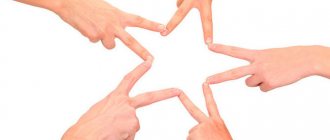We need anxiety and stress to protect ourselves from danger. The brain evaluates the surrounding situation. If something threatens our safety, it puts the body into combat mode to fight and run away. But most of the stressful situations we face every day don't kill us. Maybe we're arguing with colleagues, studying for an exam, or going on a first date. In such conditions, the body's reactions only get in the way, we get nervous and cannot concentrate on work, remember information or engage in creativity.
You need to turn off the tension and relax. But how to do this if you are worried? The brain is overstimulated, and self-conviction that everything is fine and you need to pull yourself together does not work.
Do not confuse relaxation and rest. Nobody bothers you to sit and do nothing at the same time, but at the same time worry and worry. So just taking a break from work will not help you relax and calm your nervous system.
The best option is to act from the body, that is, relax the muscles and remove the effects of stress. The brain will decide that since the body is calm, there is no danger, then it can calm down.
To do this, try the deep relaxation technique offered by the charity No Panic, which helps people with anxiety and panic disorders.
What is the ability to relax?
Relaxation - what is it? Modern man is predominantly in a tense state.
We experience stress at work, on the way home, at home, watching the news on TV, browsing the Internet, visiting the clinic, shopping and in many other cases.
In this regard, there is a need to relax and unwind. But, unfortunately, a tired, exhausted body no longer knows how to do this.
Constantly being in tension, we lose the ability to relax. The result is headaches, poor digestion, heart problems, and fatigue.
Relaxation is the ability to escape from reality, to forget for a while about conflicts, stress, health problems, and failures.
This is an internal state of peace, calm . You forget for a short time about the stressors constantly affecting you, and feel peace.
The ability to relax is to find ways to bring you to a calm state.
Take a walk around the building
If there is a garden or park area near your office, you can spend your holidays sitting on a bench or walking around. This is a great option for those who have to spend eight hours working with a computer or papers. And when working with people, nature can help significantly. Relaxing in the park area will significantly improve your well-being and allow you to start working with renewed vigor. Employees who have access to nature during their breaks can greatly improve their work skills. In addition, personnel stay in such work much longer than in an environment where they are surrounded only by concrete walls.
In the USA, a barista refused to serve a woman without a mask and suddenly became rich
Why Jennifer Aniston herself considers her role in the series “Friends” to be her curse
New iOS 14 app will completely change the way you use your iPhone
Why am I always stressed?
I can't relax. The nervous system is working hard . The environment puts pressure on us, we are constantly forced to solve some issues, and additional stress factors affect us - noise, smells, poor ecology. This in turn causes internal tension.
Psychological and physical blocks and clamps appear, and then the moment comes when you are no longer able to fully relax.
All this is complemented by constantly present negative thoughts, experiences, and fears .
Living in big cities is stressful in itself. It is difficult for a modern person to deal with the everyday influences of the surrounding reality.
Have you noticed that when you are very tired, you cannot fall asleep quickly, and the sleep itself is intermittent and restless?
This happens because the nervous system is overstrained, excited, and difficult to calm down.
Proper preparation for bed
Insomnia caused by stress can be aggravated by eating heavy food at night, an uncomfortable bed, environmental irritants and other little things. Relaxation techniques and pills alone cannot solve the problem. Expert advice on proper preparation for bed will help:
- take evening walks;
- maintain a sleep-work schedule;
- try not to overeat before bed;
- take your last meal 2-3 hours before rest;
- create a dark and quiet environment in the room;
- avoid visual stress before bedtime;
- perform evening rituals (drink tea, read a book, take a bath);
- Make sure the bedroom is well ventilated.
Stress is the most common cause of insomnia. To normalize the condition, you will need to follow the advice of psychotherapists, use techniques to relax the nervous system and use medications with a sedative effect. Additionally, it doesn’t hurt to learn about the rules of getting ready for bed.
How to learn to relax properly?
The art of relaxation can be learned.
Quick ways
How to quickly relax and relieve tension? What to do if the body urgently needs rest, but there is little time for it:
- Become aware of your tension . At times of tension, stress hormones are produced that prevent you from calming down. It is important to understand the reason.
- Give yourself the opportunity to physically relax . Hit a punching bag, do pull-ups on the bar, do a few squats or sharp swings of your arms - activity will help work off the stress hormone.
- With a sigh, we raise our hands up, stretch as high as possible, then, exhaling, lower our hands.
- We sit down, hugging our knees and pressing our heads against them. We sit in this position for about 10 seconds, then relax.
- The following breathing exercise will help you relax : inhale, simultaneously filling and protruding your stomach, then your chest. We exhale, releasing the air from the chest, then lower the stomach.
Psychologically
In this case, the brain is involved in the relaxation process. Make him stop thoughts , especially negative ones.
As soon as you start thinking about something bad, tell yourself “stop.” Imagine an emptiness where there are no thoughts.
Learn to meditate. Sit in a comfortable position. A half lotus is well suited for this - legs crossed in front of you. Close your eyes. Breathe slowly and deeply.
Imagine a calm sea in front of you. The wind slowly blows across your face. You watch how the surface of the water is slightly agitated. You feel good and relaxed.
Remove clamps
Muscle armor is a chronic, constant tension of the muscles without the ability to fully relax them.
A closed mouth indicates that we are blocking the transmission of feelings and need protection. The following exercise will help relieve tension. Lie in the fetal position with your arms wrapped around yourself.
Start making sucking movements with your mouth. Many people shed tears during the process. There is no need to restrain yourself - this is how you get rid of clamps .
Throat and neck. Clamps in this area indicate a desire to control your fear, unacceptable reactions and statements.
You can understand the presence of blocks by a monotonous, tense voice. The person seems to be restraining himself.
Yawning will help get rid of the block in this area; sometimes we do it involuntarily. Open your mouth as wide as possible and yawn. Do the exercise in the morning and evening.
Rib cage. Blocks arise when we hold back sadness, laughter, passion .
Pay attention to your breathing - most likely it is shallow, delayed, without strong protrusion of the chest.
You can check for breathing problems by pronouncing the sound “A”. If you cannot do this within 20 seconds, then there are problems.
Psychotherapist Lowen developed the following breathing technique. You need to lie across the sofa, feet on the floor. We hang the buttocks slightly.
Place a bolster under your lower back to allow your chest to expand as much as possible. Place your hands above your head with your palms facing up. Breathe deeply and rarely.
Aperture . Tension in this place is associated with chronic fear. The exercise is performed standing. Bend your arms in front of you, relax your hands. Turn your body to the left as far as possible and stay there for 60 seconds.
Then in the other direction. The presence of muscle clamps can be determined by the fact that breathing is disrupted, pain appears, which means that muscle clamps are present.
To relieve tension, another exercise : lie on the floor, bend your legs at a right angle, place your arms freely, lower your legs to the right and left until they stop, your waist remains pressed to the floor.
Body from stress
Physical activity will help relieve tension:
- bend forward several times;
- stretch;
- turns the body to the right and left;
- raise your arms up, lean to the right, then to the left, stretching your arms;
- dancing to rhythmic music.
Breathing exercises are useful : when inhaling, the stomach protrudes, and when exhaling, it contracts.
Swimming will help relieve tension throughout the body .
Aromatherapy has proven itself well. Use special aroma lamps with oils, sticks or candles.
Add aromatic oils to a warm bath: before use, be sure to mix them with salt, otherwise they will remain in the top layer of water and can burn.
Brain after hard work
Long and intense work causes you to be unable to fall asleep and relax.
- take a warm bath with herbs, sea salt or aromatic oils;
- massage is useful, if it is not possible to massage the whole body, pay attention to the feet and lower legs;
- drink herbal tea with chamomile, lemon balm or mint;
- lie down comfortably, try to relax your muscles as much as possible. If you experience pain or swelling in your legs, place them on a slight elevation.
After stress
What to do if you are under severe stress and cannot calm down:
- Understand the cause of stress.
- Eliminate exposure to additional adverse factors: TV, showdowns, loud sounds.
- Do meditation.
- Go for a walk, ride a bike, spend time in nature.
- Take a warm bath with sea salt.
- Switch to another type of activity.
- Treat the situation correctly, do not take everything to heart, try not to react to little things.
- Minimize, or better yet eliminate, communication with unpleasant and annoying people.
- Watch an easy movie that doesn't require stress.
With husband
I can’t relax with my husband: what should I do? This problem is usually deeply psychological. If you cannot relax with your husband, it means that there are some kind of complexes, most often originating from childhood.
The ability to relax is also a factor of trust. How much do you trust your man? If you are embarrassed by him, afraid of criticism, you need to work with it.
What to do:
- start simple, don’t open up completely at once, do everything step by step;
- Leave the house together more often for recreational activities. Go for a walk, somewhere where you can feel at ease;
- organize joint activities, take part in family competitions, sports games;
- if you are embarrassed to expose yourself in front of your husband, do it gradually. For a romantic evening, light candles that provide low light but create a certain mood;
- take a relaxing bath with sea salt or aromatic oils;
- turn on soothing music;
- talk to each other more, share your experiences.
Tell your spouse what worries you. A loving man will understand and support .
Tighten your muscles
This sounds counterintuitive, doesn't it? Strain your muscles? But you want to relax! However, it works. Tension and relaxation of individual muscle groups is a special technique that greatly helps in relaxation. What you need to do is close your eyes and focus on a specific muscle group, alternately tensing and relaxing them. Using audio or video can make this technique more effective.
“Male” fun and more: 7 ways to strengthen your bond with your son
Superbad" - excellent: 5 best and 5 worst comedies of the early 21st century
The house looks like a huge concrete box: in fact it is spacious and bright
Relaxation techniques for neurosis
Neuroses are mental disorders when causeless anxiety and psychological discomfort appear.
A person is constantly in a state of tension, negative emotions predominate , which directly affects well-being and relationships with other people.
For neuroses, a visit to a psychotherapist is recommended. If necessary, the doctor will prescribe medications.
During attacks, it is important to understand that anxiety comes from within. It is necessary to relieve muscle tension; the exercises described above are suitable for this. Meditation accompanied by calm music, sounds of nature or mantras is shown.
exercises with deep and slow breathing , which calm the nervous system, help well
Autogenic training. positive thoughts in oneself .
First you need to relax. We begin relaxation from the lower extremities, then the arms, stomach, throat, head. We breathe evenly and deeply.
We imagine that we are exhaling dark smoke filled with negativity, and inhaling golden air filled with solar energy.
Autogenic training can be accompanied by suggestions like: I am calm, I am relaxed, I react calmly to any influences, I am positive.
Suggestions should be made in a positive way, that is, there should not be a “no” in them, but positive statements.
Meditate
Meditation and relaxation exercises are a great way to reduce stress levels to a minimum for a long time. If you regularly exercise 3 times a week, then after 2 months your resistance to stress will increase significantly. This type of activity provides several benefits. Firstly, they teach you to control your emotional state. Secondly, even from a scientific point of view it has been proven that regular meditation and relaxation exercises help reduce cortisol, the stress hormone, in the body. In addition, such exercises have other benefits. For example, they are useful for improving memory and concentration.
A simple exercise to relieve stress
Sit comfortably or lie down. Place your hands behind your head. Straighten your legs up to your toes. Suck your stomach in, hold your breath, and count to seven. Exhale slowly, relaxing all muscles. Feel your body relax. Then stretch as if after sleep (at this time you can even yawn) and say to yourself (out loud or in your mind): “I am full of energy, focus and calm.”
Use Brian Tracy's method
Brian Tracy is a famous Canadian expert on the psychology of success. So, in one of his books, he described a method that can be useful to people experiencing stress. First, he advises describing on a piece of paper the situation that caused the shock. Then determine the worst-case scenario for potential developments. And what’s interesting is that for many this is enough to realize that what happened is not such a tragic situation as it seemed before. But Tracy's method also has a continuation. The next step, he advises, is to understand the consequences of such a scenario and think about what can be done to prevent or minimize the consequences of the worst. Now - take action! You already know how to solve this problem.
Take up drawing
Best materials of the month
- Why you can't go on a diet on your own
- 21 tips on how to avoid buying stale food
- How to keep vegetables and fruits fresh: simple tricks
- How to curb your sweet cravings: 7 unexpected products
- Scientists say youth can be extended
In recent years, not only children, but also adults have become interested in painting. True, there are special ones for adults - anti-stress ones. Psychologists say that color therapy is one of the most effective methods to achieve inner harmony and calm down. Isn't it time for you to get a set of good pencils and a sketchbook? After all, drawing is a safer method of relieving stress than sedative pills.
Go for a massage
A good massage relieves stress. Moreover, this does not necessarily mean a whole body massage; you can get by with light rubbing of the head and neck. Have you ever noticed that many people run their hands over their heads when they are nervous? They do everything right, albeit unconsciously. There are many nerve endings on the head and neck, stroking which helps to quickly calm down. So the next time you start to lose your temper, just rub lightly in a circular motion onto your skin from your forehead to the back of your head.










